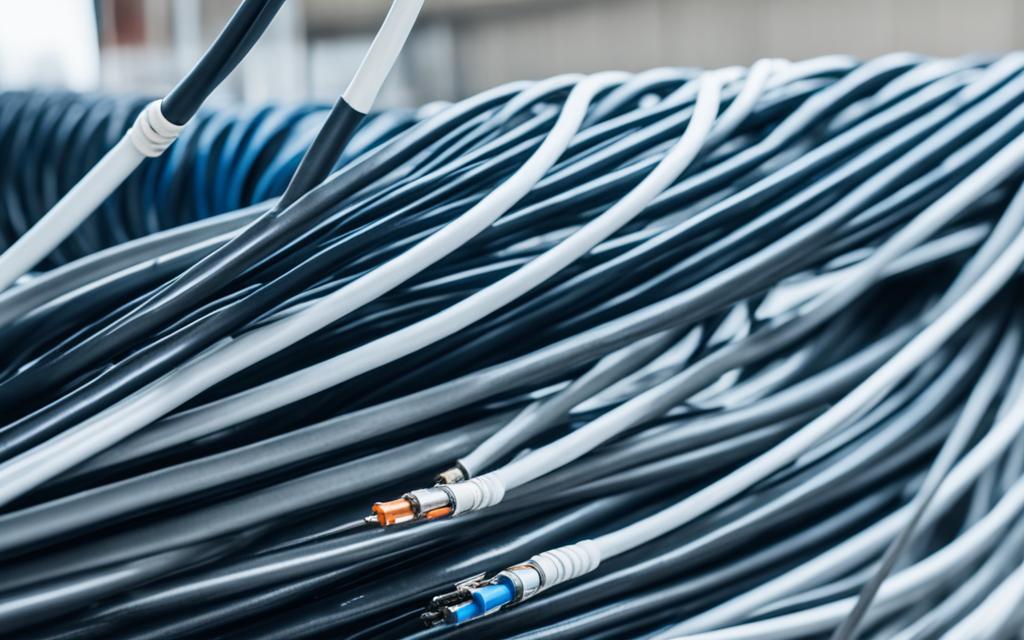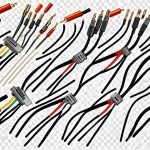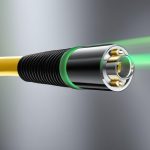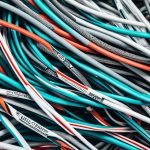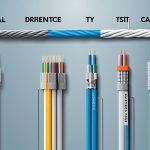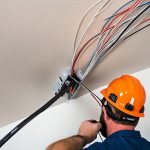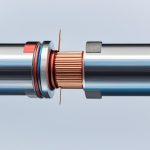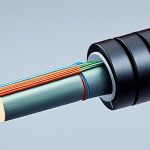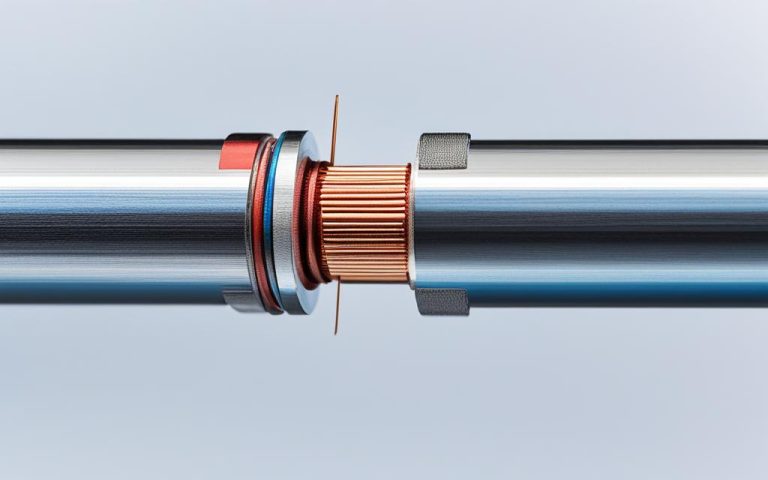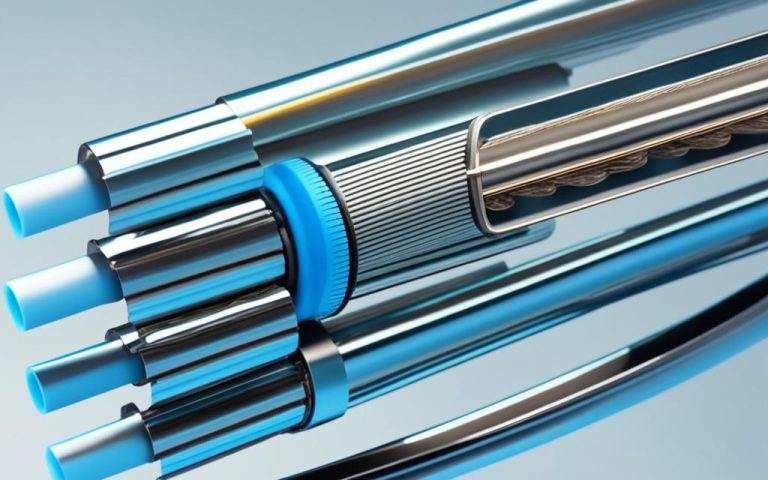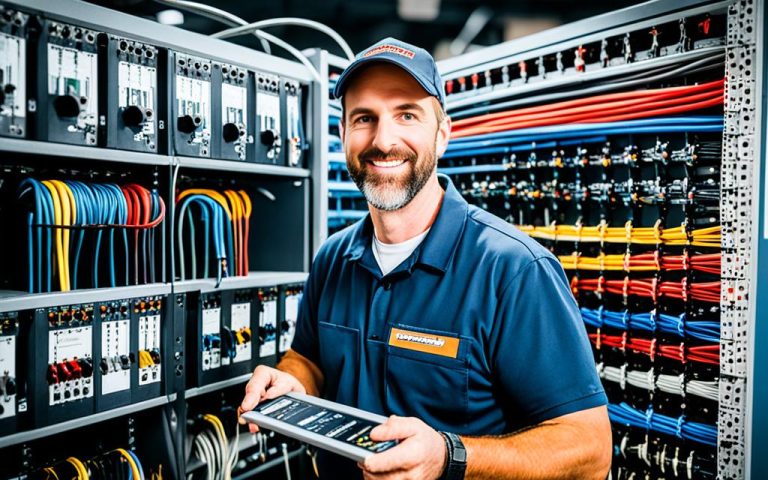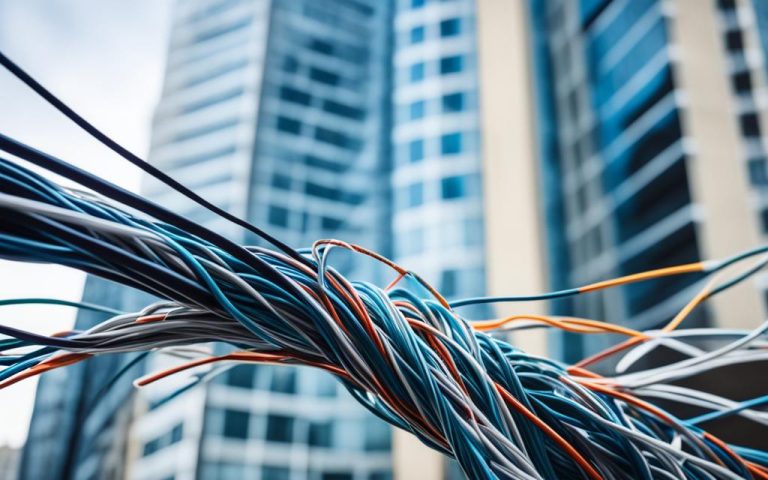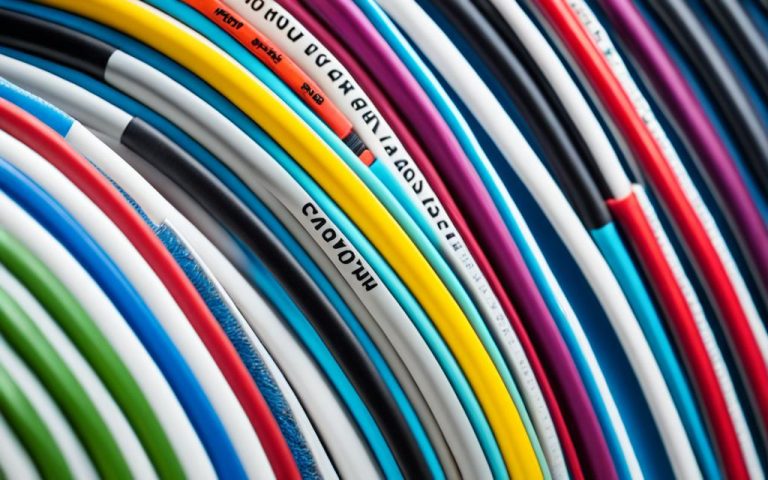Coaxial cables are an essential component of modern CCTV systems, providing a reliable and cost-effective solution for enhancing surveillance system performance. These cables enable the transmission of high-resolution video signals, such as 4K, over long distances without signal degradation. The exceptional image quality, improved low-light performance, and wide dynamic range capabilities of coaxial cables make them a preferred choice for upgrading analog systems to higher resolutions.
Moreover, coaxial cables offer easy installation and compatibility with existing infrastructure, reducing the need for extensive rewiring. This makes them an attractive option for businesses and organizations looking to improve the effectiveness of their surveillance systems without incurring significant additional costs. With their superior performance and compatibility, coaxial cables play a crucial role in ensuring reliable and high-quality video surveillance.
As we delve further into the world of coaxial cables in CCTV systems, we will explore their construction, advantages, installation process, and maintenance requirements. Stay tuned to discover how coaxial cables can revolutionize your surveillance system performance and provide you with unparalleled peace of mind.
Understanding Coaxial Cables in CCTV Systems
Coaxial cables play a crucial role in the efficient and reliable transmission of high-resolution video signals in CCTV systems. Designed specifically for this purpose, coaxial cables consist of several components that work together to ensure optimal performance.
At the core of a coaxial cable is a center conductor, which carries the video signal from the camera to the recording devices. Surrounding the center conductor is an insulating layer, which provides electrical insulation and protects the signal from interference. This insulating layer is crucial in maintaining the quality and integrity of the video signal.
To further enhance the performance of coaxial cables in CCTV systems, a metal shield is wrapped around the insulating layer. This metal shield serves as a protective barrier, minimizing signal loss and shielding the cables from external electromagnetic interference. This ensures that the video data is transmitted reliably and without any disruptions.
Finally, an outer insulating jacket encases the entire cable, providing additional physical protection and insulation. This jacket also makes the cable more durable and resistant to environmental factors such as moisture and temperature fluctuations, ensuring longevity and consistent performance.
Coaxial cables used in CCTV systems are available in different types, such as RG59 and RG6, each with varying signal capacities and distances. The choice of coaxial cable depends on the specific requirements of the CCTV system, including the distance between the cameras and recording devices, the resolution of the video signals, and the desired level of signal quality.
Another advantage of coaxial cables is their compatibility with various CCTV technologies. Whether the system is using analog cameras, HD-TVI, or HD-CVI, coaxial cables can seamlessly integrate and transmit the video signals effectively.
Understanding the composition and functionality of coaxial cables is essential for maximizing the performance of CCTV systems. The proper selection and installation of coaxial cables ensure clear, high-quality video transmission, making them an indispensable component in modern surveillance setups.
Stay tuned for the next section, where we will explore the advantages of using coaxial cables in CCTV systems.
Advantages of Coaxial Cables in CCTV Systems
Coaxial cables offer several key advantages for CCTV systems, making them a highly beneficial choice for surveillance installations. These advantages include:
Superior Image Quality and Resolution
Coaxial cables provide exceptional image quality and resolution, ensuring clear and detailed video footage. This makes them particularly suitable for applications that require accurate identification, such as facial recognition and license plate reading. With coaxial cables, security professionals can rely on high-quality visuals for enhanced surveillance and effective decision-making.
Excellent Low-Light Performance
One of the significant advantages of coaxial cables is their ability to deliver reliable surveillance even in challenging lighting conditions. These cables are designed to handle low-light environments and offer enhanced sensitivity, allowing CCTV systems to capture clear images even in darkness. This ensures continuous monitoring and enables effective security measures round the clock.
Wide Dynamic Range (WDR) Capabilities
Coaxial cables are equipped with wide dynamic range (WDR) capabilities, which enable them to balance exposure levels between bright and dark areas. This results in well-balanced and detailed images, ensuring that no crucial information is lost due to overexposure or underexposure. With WDR, surveillance professionals can have a comprehensive view of their surroundings, even in challenging lighting conditions.
Support for Advanced Video Compression
Coaxial cables support advanced video compression standards, such as H.265. These compression algorithms significantly reduce bandwidth and storage requirements without compromising video quality. By leveraging the capabilities of coaxial cables, CCTV systems can maximize storage efficiency, optimize network utilization, and minimize overall costs.
Remote Monitoring and Mobile Access
With coaxial cables, remote monitoring and mobile access become seamless. Users can easily view live or recorded footage from their smartphones, tablets, or computers, enabling them to monitor their premises from anywhere at any time. This level of accessibility enhances situational awareness and enables quick response to incidents.
Cost-Effective and Scalable
Coaxial cables are not only highly effective but also cost-effective in CCTV systems. They can be easily integrated into existing infrastructure, eliminating the need for extensive rewiring and reducing installation costs. Additionally, their scalability allows for system expansion without significant investment in infrastructure modifications. This makes coaxial cables a flexible and economical choice for both small-scale and large-scale surveillance installations.
Overall, the advantages of coaxial cables in CCTV systems are numerous – from superior image quality and low-light performance to WDR capabilities, support for advanced video compression, remote monitoring, and cost-effectiveness. These advantages make coaxial cables an indispensable component for reliable and high-performance surveillance systems.
Installation and Compatibility of Coaxial Cables in CCTV Systems
Installing coaxial cables in CCTV systems is a straightforward process, particularly when upgrading from analog systems. By utilizing existing coaxial cables, you can significantly reduce installation time and costs. However, it is crucial to ensure that the coaxial cables meet the required specifications for supporting high-resolution video transmission. Compatibility is another essential aspect to consider when incorporating coaxial cables in CCTV systems.
Different CCTV technologies, such as analog or HD-TVI, may require specific types of coaxial cables. It is vital to select the appropriate cables that are compatible with the cameras and recording devices used in your system. By ensuring compatibility, you can optimize the performance and reliability of your CCTV system.
- Tip: Before installation, carefully check the specifications of your cameras and recording devices to determine the compatible coaxial cable type.
To help you understand the various types of coaxial cables and their compatibility with different technologies, refer to the following table:
| Coaxial Cable Type | Technology Compatibility |
|---|---|
| RG59 | Analog, HD-TVI |
| RG6 | Analog, HD-CVI |
| RG11 | Analog, HD-SDI |
This table provides a general guide to the compatibility between coaxial cable types and CCTV technologies. However, it is essential to consult the specific requirements of your cameras and recording devices to ensure proper compatibility and optimal system performance.
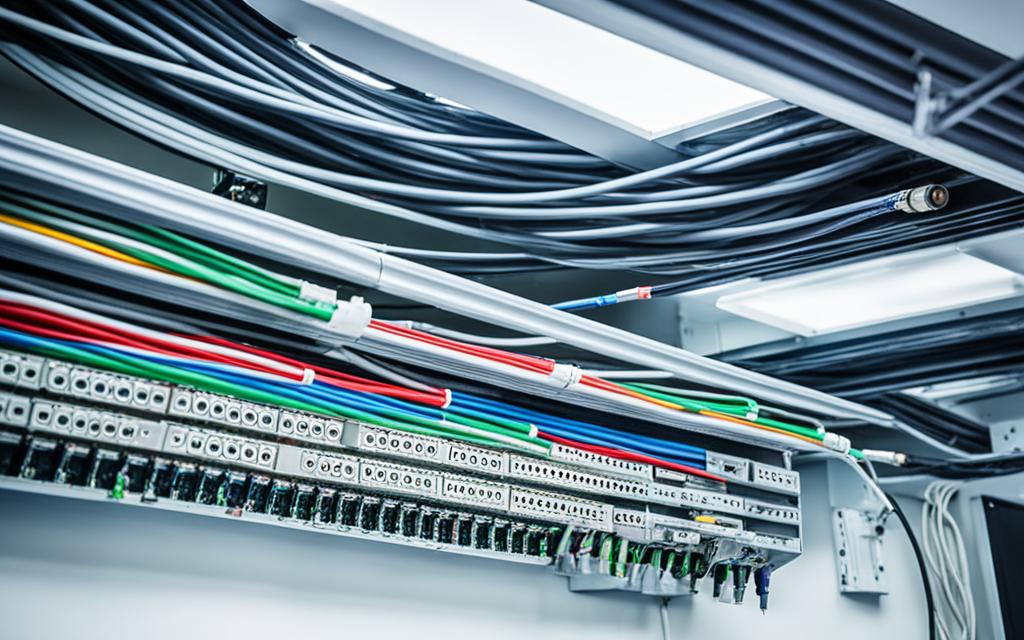
When installing coaxial cables, it is advisable to follow industry best practices to ensure a reliable and efficient connection. Proper cable routing, connector termination, and grounding techniques play a crucial role in optimizing the performance and longevity of your CCTV system.
By carefully selecting and installing compatible coaxial cables, you can effectively leverage their capabilities in enhancing the performance and reliability of your CCTV system.
Maintenance and Longevity of Coaxial Cables in CCTV Systems
Regular maintenance is crucial for ensuring the long-term durability and optimal performance of coaxial cables in CCTV systems. By following proper maintenance practices, you can extend the lifespan of the cables and maintain the overall system performance. Here are some essential maintenance tips:
1. Cleaning the Cables
Periodically clean the coaxial cables to remove dust, dirt, and debris that can accumulate over time. Use a soft cloth or a gentle cleaning solution to wipe the cables gently. Avoid using abrasive materials or harsh chemicals that can damage the cables.
2. Inspecting Connectors
Regularly inspect the connectors of the coaxial cables for signs of damage or wear. Look out for loose connections, bent pins, or corrosion on the connectors. Damaged connectors can lead to signal loss or interference, affecting the performance of the CCTV system.
3. Updating Firmware
Keep the firmware of your CCTV system up to date to ensure compatibility and access any performance enhancements or security patches provided by the manufacturer. Regularly check for firmware updates on the manufacturer’s website and follow the instructions for updating the firmware of your specific system.
4. Professional System Checks
Arrange for a professional technician to perform routine system checks on your CCTV system. They can inspect the entire setup, including the coaxial cables, cameras, and recording devices, to identify any potential issues or areas for improvement. Professional maintenance visits help to identify and address problems proactively, ensuring the optimal performance of the system.
Coaxial cables are designed to be durable and can withstand harsh environmental conditions. However, it is important to monitor their performance over time. If you notice any damage or deterioration in the cables, it is essential to replace them promptly to prevent any disruptions in the CCTV system performance.
Maintaining the coaxial cables in your CCTV system ensures their longevity and reliability, allowing for continuous surveillance and peace of mind.
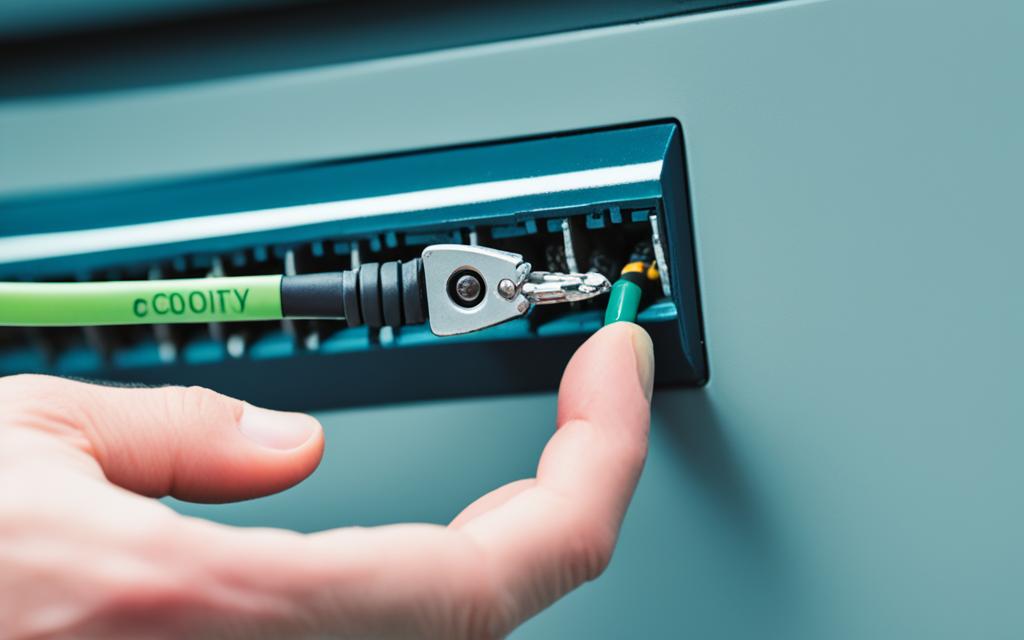
| Maintenance Tips | Frequency |
|---|---|
| Cleaning the Cables | Every 3 months |
| Inspecting Connectors | Every 6 months |
| Updating Firmware | As recommended by the manufacturer |
| Professional System Checks | Every 12 months |
Conclusion
Coaxial cables are an invaluable component for optimizing the performance of CCTV systems. Their ability to transmit high-resolution video signals and ensure superior image quality make them an excellent choice for upgrading analog systems to higher resolutions. With easy installation and compatibility with existing infrastructure, coaxial cables offer a convenient and cost-effective solution.
One of the key advantages of coaxial cables is their enhanced low-light performance, which allows for reliable surveillance even in challenging lighting conditions. Additionally, their wide dynamic range capabilities ensure well-balanced and detailed images, providing accurate and actionable video footage.
By leveraging the power of coaxial cables, surveillance systems can achieve reliable and superior video quality, delivering effective security and peace of mind. Whether it’s for commercial or residential applications, coaxial cables provide a robust and scalable solution to meet the evolving needs of CCTV system performance.
FAQ
What are the advantages of using coaxial cables in CCTV systems?
Coaxial cables offer superior image quality, enhanced low-light performance, wide dynamic range capabilities, and compatibility with existing infrastructure, making them an ideal choice for upgrading analog systems to higher resolutions.
How do coaxial cables enhance CCTV system performance?
Coaxial cables are capable of transmitting high-resolution video signals, such as 4K, over long distances without signal degradation. They provide exceptional image quality, improved low-light performance, and wide dynamic range capabilities, resulting in clear and detailed video footage.
How do I install coaxial cables in a CCTV system?
Installing coaxial cables in CCTV systems is relatively straightforward, especially when upgrading from analog systems. The existing coaxial cables can be utilized, significantly reducing installation time and costs. It is important to ensure that the coaxial cables meet the required specifications to support high-resolution video transmission.
Can I use any type of coaxial cable for my CCTV system?
Different types of coaxial cables may be required for different technologies, such as analog or HD-TVI. It is important to select the appropriate cables that are compatible with the cameras and recording devices being used in the system.
How do I maintain the coaxial cables in my CCTV system?
Regular maintenance is essential to ensure the long-term durability and optimal performance of coaxial cables in CCTV systems. This includes cleaning the cables, inspecting connectors for signs of damage or wear, and keeping firmware up to date. It is recommended to have a professional technician periodically check the system for any potential issues.

